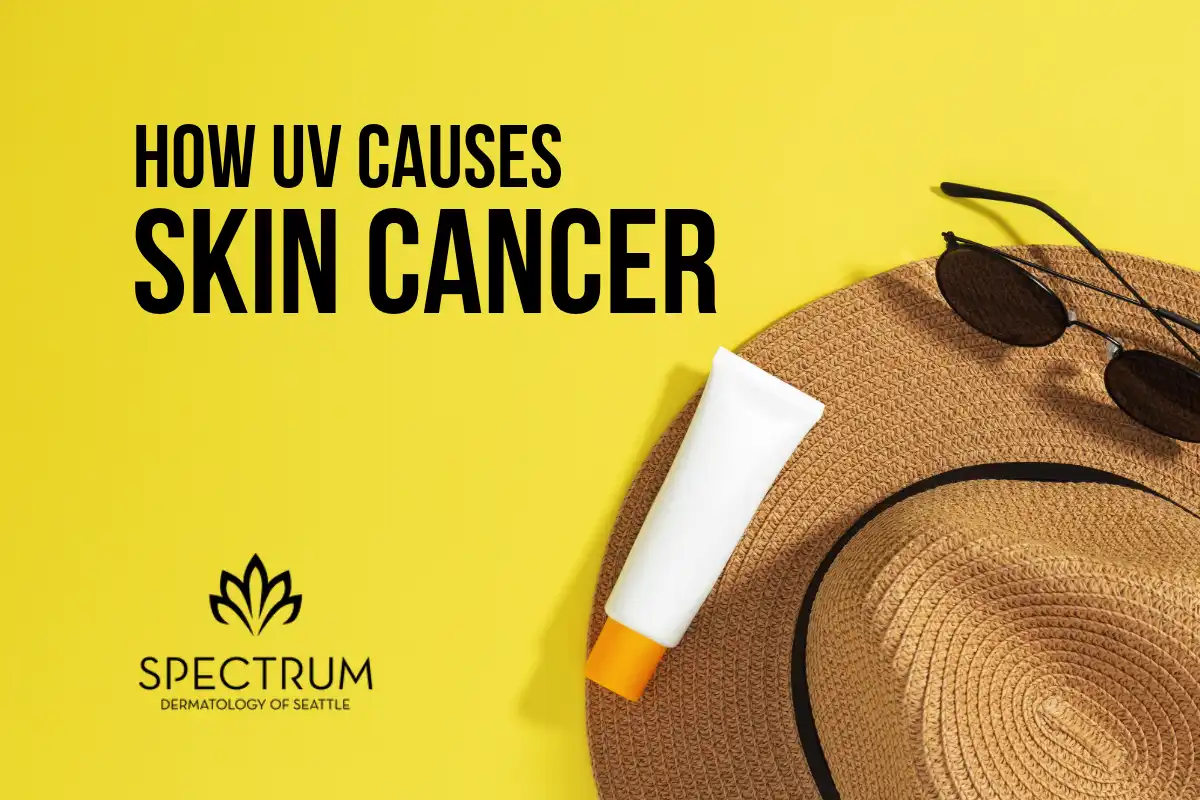May is Skin Cancer Awareness month, an entire month dedicated to educating the public about the most common type of cancer, its impact, identification and prevention. As a dermatologist, I am passionate about educating patients about this important subject that is close to my heart and is my life’s work. Every day in my clinic I diagnose and treat skin cancer, educate patients about sun safety, and do preventative screenings. I find the better educated we all are, the better prepared we are to take the best care of our own skin. Your partnership is essential in preventing and diagnosing your possible skin cancer. No one ever thinks they’ll get skin cancer, but the incidence is on the rise, and it can affect anyone of almost any age, any skin type, and without any specific risk factors. I tell my patients the only risk factor you need for skin cancer is having skin. So learn what you can about skin cancer, learn to identify it, partner with your dermatologist, and take your responsibility to your own skin seriously. Together we can reduce the impact of skin cancer.
This will be the first of three articles addressing skin cancer this month. In this first article I will discuss a general overview of skin cancer, identification, and prevention. If you only read one blog I ever write, this should be it. In the second article I will nerd out about the science of how ultraviolet radiation (sun and sun lamps) cause skin cancer and other damage to the skin. In the third article I will go into depth about sunscreen and other prevention.
There are four main types of skin cancer, in order of frequency: basal cell carcinoma, squamous cell carcinoma, melanoma, and Merkel cell carcinoma. Each has a different appearance, prognosis and treatment. The following are generalizations meant for educational purposes, and do not apply to all cancers. I have seen all types of skin cancer in all types of skin. See a dermatologist if you have a spot on your skin that is new, has changed or doesn’t seem quite right. This blog is not a substitute for an evaluation by a professional.
Basal cell carcinoma is the most common type of cancer of any organ, world wide. They tend to occur in lighter skinned people in sun exposed areas, and increase in frequency with the amount of sun exposure. They are not typically life threatening, but they are locally destructive, and the impact of that will depend on location. They are typically pink and shiny or scaly. They can bleed or scab.
Squamous cell carcinoma is similarly most commonly found in lighter skinned people with lots of sun exposure in the past, in sun exposed areas. They are also typically pink and scaly, grow slowly and can bleed or scab. Some more aggressive types can grow quickly, and are then often mistaken for a wart or a splinter that doesn’t heal. They may be painful or itch. They are usually easily treated, but can be deadly if not caught early.
Melanoma is the most serious type of skin cancer. It accounts for about 1% of all skin cancers, but most skin cancer deaths. It is estimated that more than 100,640 melanomas will be diagnosed in the United States this year, and over 8,290 Americans will die of melanoma (American Cancer Society. “Key statistics for melanoma skin cancer.” Last updated 1/17/2024, Last accessed 5/4/2024.) Melanoma is highly curable when caught early, but can be dangerous even when very small. Most melanomas are diagnosed on routine skin cancer screening exams, so this is where partnering with a dermatologist is essential.
Finally, a skin cancer most have not heard of: Merkel cell carcinoma. This is the most rare type of skin cancer, with about 2000 cases diagnosed annually in the United States. It’s also a very dangerous skin cancer. These are most common in lighter skinned individuals, in areas most exposed to the sun (face, neck, arms). It tends to grow quickly, and is described as a firm, pink, red or purple bump.
Skin cancers are highly curable when caught early. This is why the American Academy of Dermatology and the Skin Cancer Foundation recommend everyone develop a lifelong habit of checking their own skin on a regular basis for changes. It’s also important to have a regular screening skin exam with a dermatologist. If you have never had one, you should get a baseline and find out more about your personal risk and how often you should continue to get skin exams based on that context.
In addition to monitoring your skin to facilitate early diagnosis, sun safe practices also reduce your risk. It’s never too early, and it's never too late to benefit from practicing safety in the sun. Sun safety basics include reducing direct ultraviolet light exposure on the skin by a combination of avoidance, covering the skin with hats, clothing, and sunglasses, and wearing high quality sunscreen every day. Yes. Every. Day.
Take a moment now in honor of Skin Cancer Awareness month to honestly assess your own sun safety practices and identify places you can improve. Do you use tanning beds? If so, could you set a deadline for stopping? If this is hard, enlist a supportive friend or family member to help keep you accountable. Do you wear sunscreen every day? If not, what can you do to introduce this as a new habit? If you can identify some opportunities for improvement but you are struggling with implementing them, consider visiting your dermatologist to discuss where you are struggling and strategies for making changes. There’s no shame in recognizing when a habit is unhealthy and taking steps to change it. Do you need motivation? Don’t wait until you have skin cancer to get motivated. Need help choosing sunscreen? We love to help with that. And our online store is FULL of so many types of excellent quality sunscreens, in all price ranges, so all you have to do is find some you like. We have curated this selection of sunscreens to reduce barriers to protecting your skin. You don’t have to spend a bunch of time searching for the sunscreens with the right ingredients. You can choose any on our site and know that it's the best quality available.
Thank you for taking the time to read this blog. The entire staff of Spectrum Dermatology of Seattle is here to support you in your endeavor to protect and maintain the health of your skin. Please let us know if we can do anything to support you better.
For more information on skin cancer prevention, see this educational page from the American Cancer Society: https://www.cancer.org/content/dam/cancer-org/online-documents/en/pdf/infographics/dont-fry-skin-cancer-prevention.pdf
Other good resources:
The Skin Cancer Foundation https://www.skincancer.org
American Academy of Dermatology https://www.aad.org/public/public-health/awareness-campaigns/skin-cancer-awareness-month
Wishing you good skin health,
Paula D Zook, MD
Board Certified Dermatologist
Owner and Medical Director
Spectrum Dermatology of Seattle, PLLC











